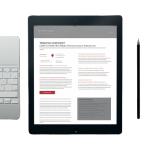
Consumer markets
Consumer-facing companies will deploy AI across their operations and business. AI will enhance marketing, supply chain management, financial operations and customer service. Many will revamp customer services with a mix of more engaging chatbots and AI agents that provide human staff with the exact information they need to assist customers. Other AI agents will (under close human supervision) help automate interactions with customers, using multiple touchpoints to impress and engage.
Further revenue boosts will come from more sophisticated AI-driven dynamic pricing, designed to adjust instantly to market shifts and competition. More consumer markets companies will use AI’s data analysis and automation capabilities to accelerate due diligence for deals and to navigate the regulatory landscape. Some leading companies will also start with AI-enhanced product design, but most companies in the sector still lack the skills and technology infrastructure to fully seize this R&D opportunity in the near term. These laggards will have to make up for lost time soon.
Financial services
The impact of AI is broad, but we’ve seen measurable impact concentrated with AI native startups and large financial institutions. There’s been a resurgence in the fintech space with AI native businesses focused on solving old problems with new platforms and business models. Similarly, we’ve seen many of the largest financial institutions experimenting with several common use cases. This experimentation has not only helped them build confidence with new tech but also refine their risk and control models in ways that position them to benefit at an accelerated pace. While AI native startups and large financial institutions continue to progress their strategies, there is a risk that firms that continue to evaluate their entry strategy will begin to fall behind noticeably starting in 2025.

Health industries
The use of AI in 2025 should be accelerated by a more flexible regulatory environment. The new administration is likely to shift oversight in this sector toward self-governance, creating more space for innovation. Pharmaceutical and medtech companies will be in the forefront of using AI to revolutionize their value chains, especially for drug and product development. Health payers and providers will deploy more AI applications to optimize revenue and volume and to help fill clinical labor shortages and assist doctors in making diagnoses, contributing to better clinical outcomes.
Top AI priorities in healthcare will include workforce transformation, personalization, tech upgrades, eliminating “process debt” (from pre-AI processes) and, above all, the responsible use of AI — as even with a more favorable regulatory framework, health industries organizations are responsible for sensitive data and for life-and-death outcomes.
Industrial products
In 2025, a smaller group of industry leaders will begin to pull ahead of their peers. Those industrial products companies with higher quality data and more standard processes will use AI to improve efficiency and insights, accelerate R&D and slash go-to-market time. Many other companies will still be focused on upgrading tech infrastructure, data governance and AI skills, but the pace of experimentation will accelerate and create additional questions on operating models, organization structures and talent requirements.
Technology, media, telecommunications
In 2025, AI agents will start to reshape demand for software platforms, as companies use them to fill the gaps of existing systems, such as ERPs. With AI agents customizing and extending the life of software platforms, some companies may choose to invest less in premium upgrades. This shift may prompt a change in software business models from seeking large-scale infrastructure investments to offering tailored AI solutions. Telcos will likely advance with hybrid AI solutions that blend GenAI with other technologies like machine learning and digital twins — boosting their own AI capabilities and reducing their dependence on traditional partners.








